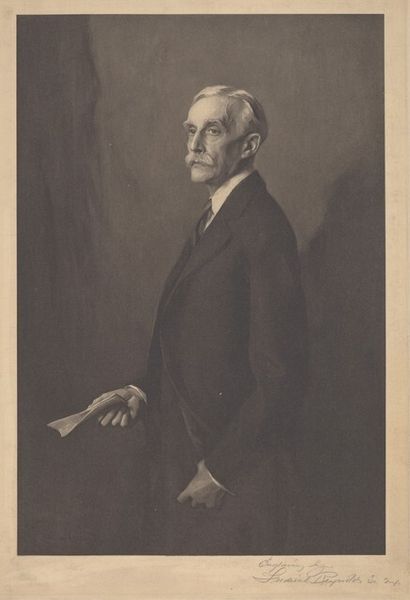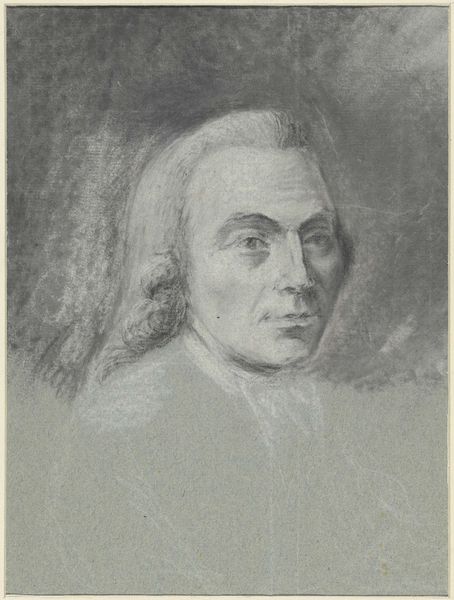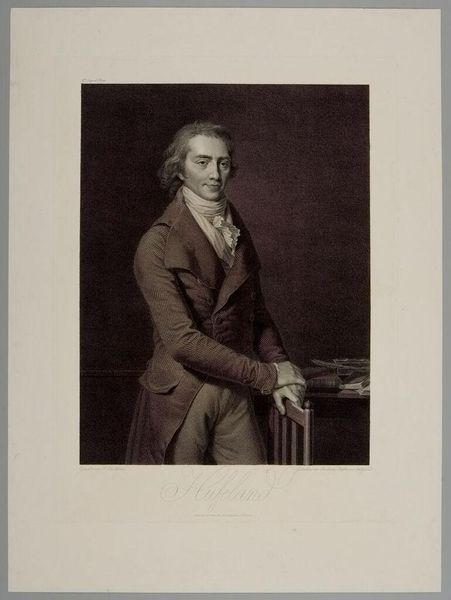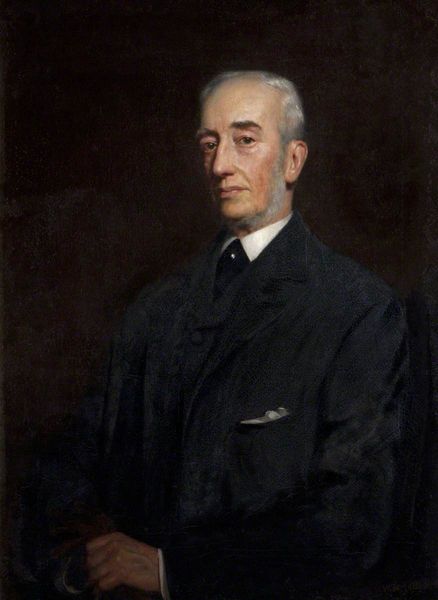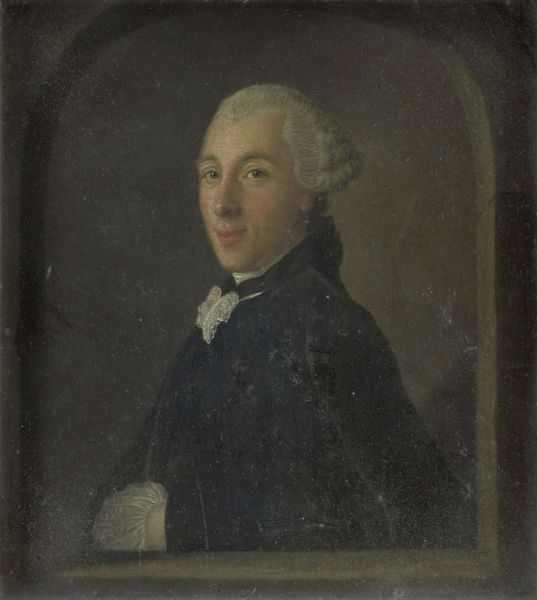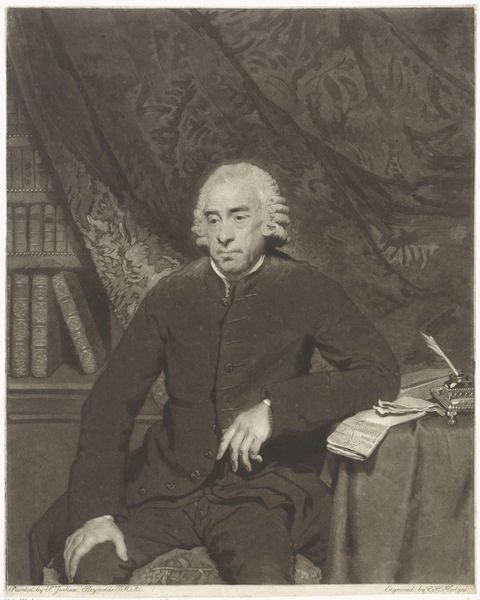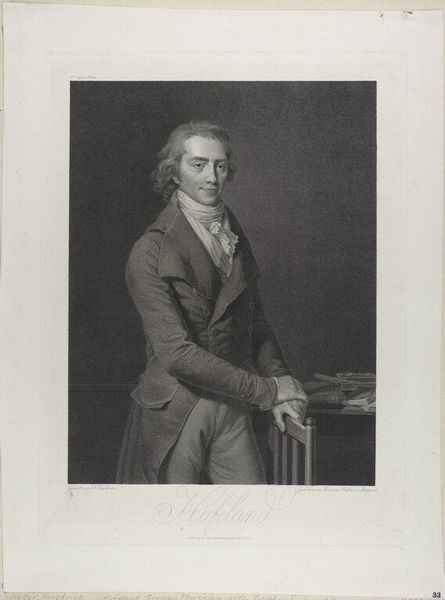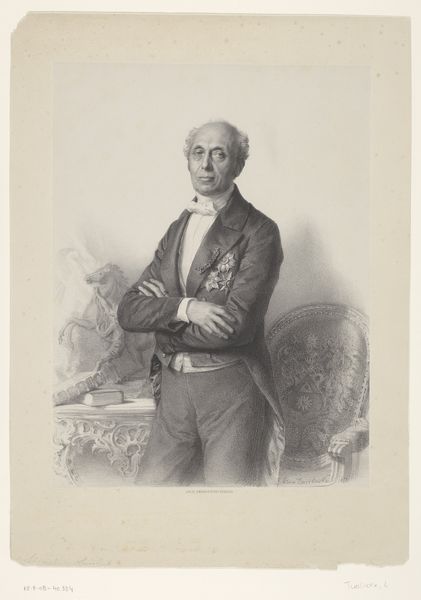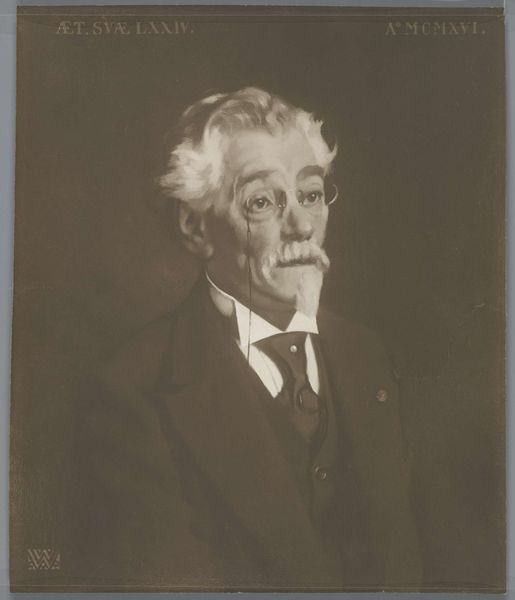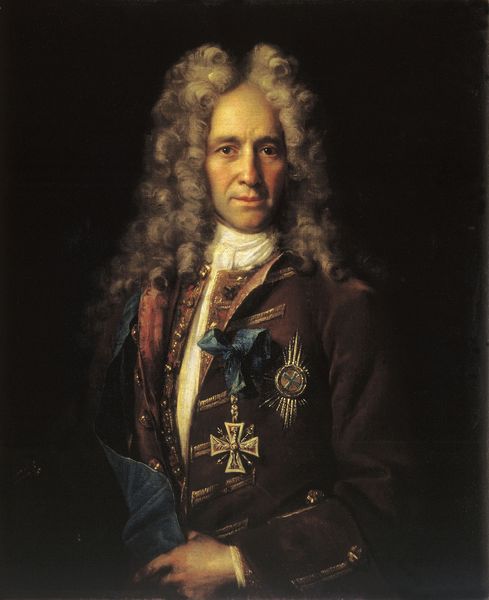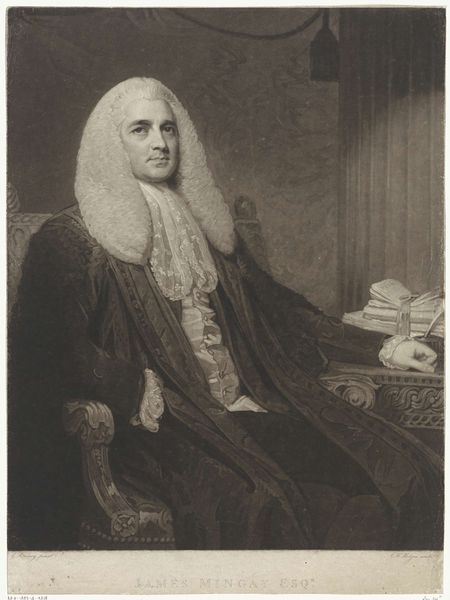
Copyright: Public Domain: Artvee
Curator: Welcome. We're standing before Jean-Jacques Henner's "Portrait de Félix Ravaisson-Mollien," an oil painting dating back to 1889. Editor: What a fascinating character! He seems like he could spin a good yarn—wise eyes, certainly a deep thinker... almost haunted, wouldn't you say? Curator: The painting employs a stark contrast, doesn’t it? The dark background isolates Ravaisson, drawing attention to his face and the almost ethereal quality of his white hair. It's a composition built on tonal contrasts, the play of light. Editor: It’s interesting, that almost oppressive darkness versus the pale skin and hair—it really amps up the drama. There's something romantic about it, in that melancholic, thoughtful kind of way. Makes me think of philosophers staring into the abyss... or their bookshelves! Curator: Romanticism indeed plays a crucial role here. The historical context, too, is key. Henner, although later associated with academic art, engaged with romantic sensibilities and the legacy of portraiture, focusing here on inner character revealed through carefully observed details. The lone book could imply a studious existence or maybe some kind of memento mori. Editor: Definitely, there is a certain gravity that speaks volumes about intellectualism, especially with the tight and contained clothing. A red rosette also seems to subtly fight with the oppressive darkness; it's the only element, as a spot of colour, disrupting a perfect storm of monochrome. The colour reads as defiance. Curator: Precisely. It provides a break in the almost suffocating sobriety. One might also read the composition as a commentary on intellectual life—the figure illuminated but somewhat detached, surrounded by the unknown. Editor: Henner definitely captured more than just a likeness; he distilled something of Ravaisson's essence. It's a window into another soul. I like that! Curator: Indeed. This is what elevates it from a simple record to a piece that continues to resonate. It provokes thought about our place in the order of knowledge. Editor: It gives you a lot to think about long after you’ve moved on, doesn’t it? Curator: Certainly, and it elegantly displays the technical finesse in what can appear, at first glance, simple in composition. Thank you for the additional insight!
Comments
No comments
Be the first to comment and join the conversation on the ultimate creative platform.
